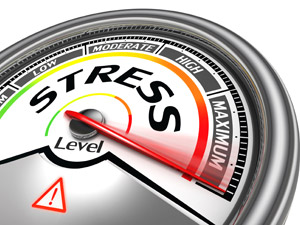Dark nights getting you down? You may be suffering from SAD syndrome – Seasonal Affective Disorder. An estimated two million people in the UK are hit by SAD syndrome from November to March – symptoms are grumpiness, fatigue and feeling down. What many don’t realise is the part that sugar plays in SAD syndrome – and how even a little bit of exercise can make a big difference.
Here’s what’s going on inside us: our bodies produce a natural “happy drug” called serotonin, a hormone which makes us cheerful and lively. During the summer, daylight triggers serotonin, as does exercise.
So on a warm sunny evening that’s why we come home from walking the dog (or the husband) and feel great! As winter draws on and we get our winter drawers on, it all this changes.
Look how daylight varies through the year: May 15 hours, July 16 hours+, September 14 hours – but in December and January we see barely eight hours. Classic SAD syndrome conditions.
Now here’s where it all goes pear-shaped in winter (and so do we if we’re not careful). Because there’s so much less daylight to stimulate the release of serotonin, and because we feel much less inclined to exercise in the dark, we need to get our fix of the happy drug from somewhere else.
Guess what else produces great bursts of serotonin? Sugar! So a doughnut or a bar of chocolate can make us feel good, too. That’s why many of us get cravings in the winter.
But there’s a big difference in the happy hit we get from sugar – it doesn’t last long. That’s because the sugar also stimulates the release of another hormone called insulin, which is designed to help drive sugar out of the blood and into cells, where it can be use to produce energy.
What happens then is that the insulin then drives down the blood sugar level and can produce low blood sugar, what doctors call “reactive hypoglycemia.”
Get your free weight loss ebook now
[NOTE: Download Sandra’s free ebook The Real Secret of Weight Loss That Lasts for more information and simple, proven ways you can fight back.]
The symptoms are fatigue, irritability, depression (SAD syndrome in fact) – plus more sugar cravings. So someone with SAD syndrome often reaches for sugar again for another quick fix.
Fighting off SAD syndrome
You can see that they’re caught in a particularly vicious cycle.
Is there any way out? Happily, there is. Research shows that eating a balanced diet, getting some exercise and cutting down on caffeine can fight the effects of SAD syndrome.
If you’ve got a Slimpod then you’ve got a very powerful weapon at your fingertips. One of the ways Slimpods do their work is by balancing the brain’s bio-chemistry – so this winter it’s really important to keep listening as often as you can.
It can stop you reaching for those sugary treats that do so much harm to your weight loss. It can direct your attention towards healthier, balanced choices. And it can motivate you to get out into the daylight a little more.
Another you can do is listen to a Chillpod. The NHS Choices website recommends that managing your stress (easier said than done with Christmas racing up on us) can play a major part in fighting SAD syndrome.
It has long been known that stress is one of the reasons people overeat, especially the sugary stuff that comforts them but also plays havoc with their metabolism.
Healthier choices, getting out more, being more active, reducing your stress…now that’s a virtuous cycle guaranteed to put a smile on any face.
Free weight loss ebook for you
[NOTE: Download my free ebook The Truth About Sugar and Yo-Yo Dieting for more information and simple, proven ways you can fight back.]





